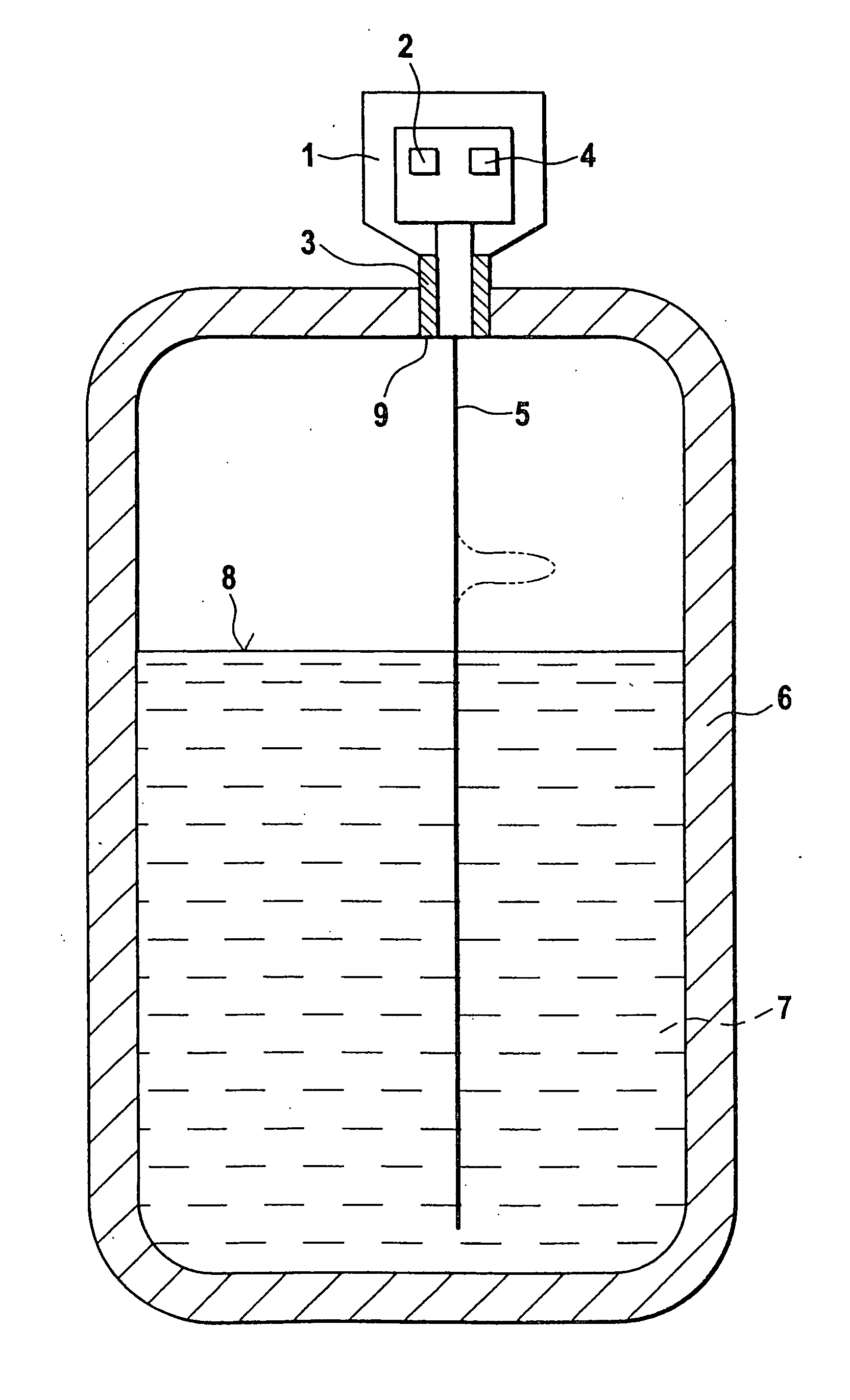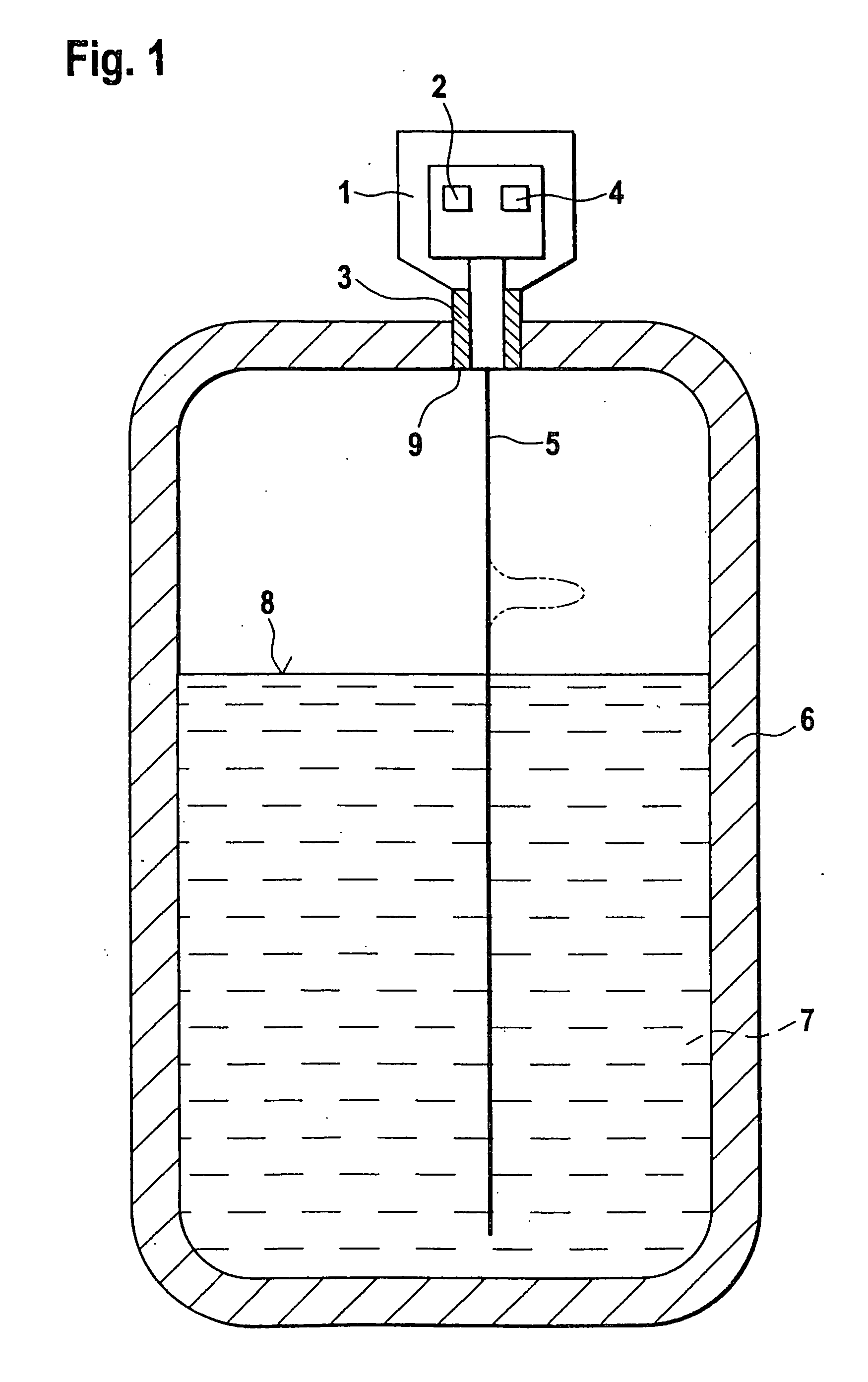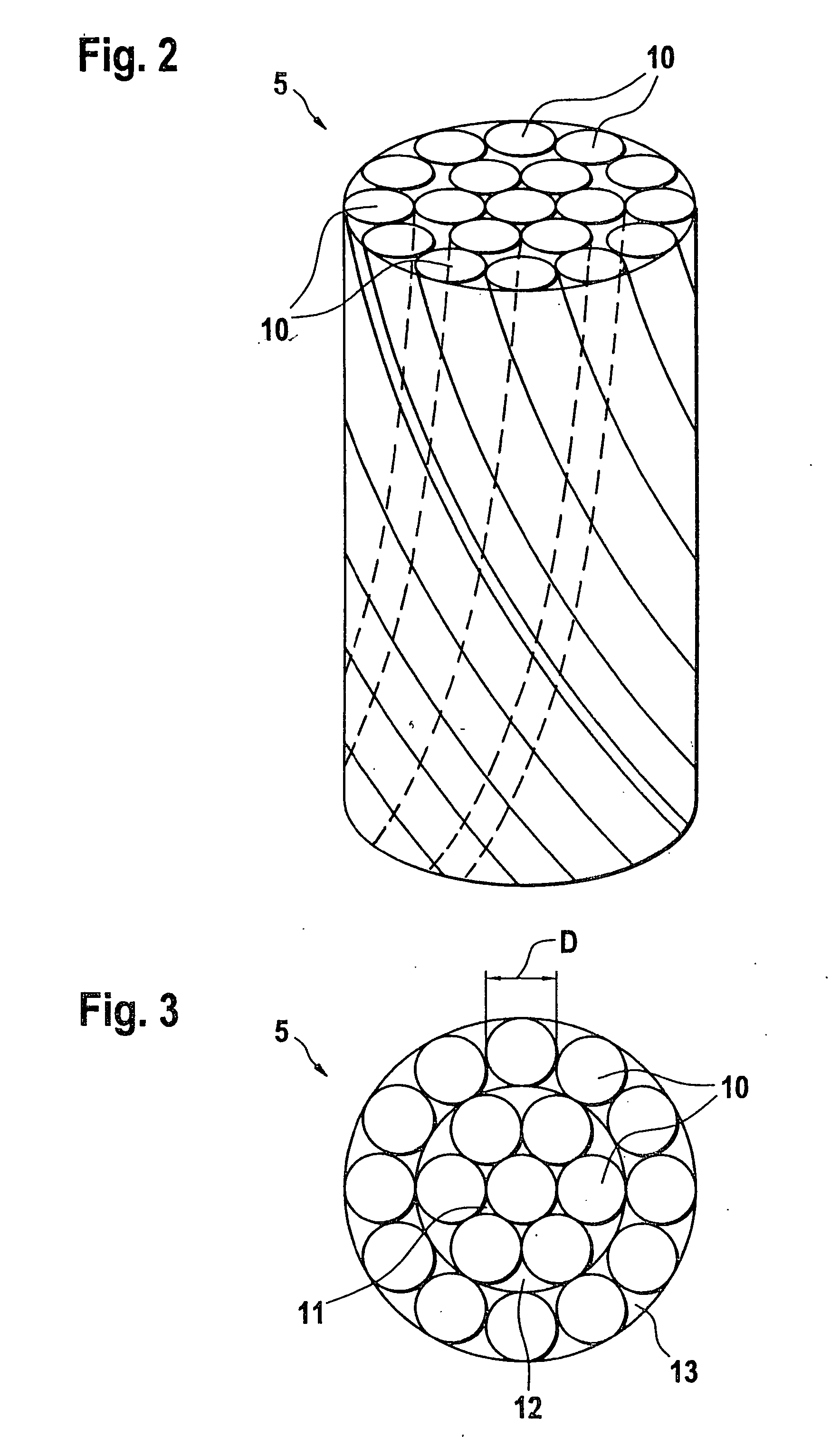Apparatus for determining and/or monitoring the filling level of a product in a container
a technology for measuring and monitoring the filling level of products, applied in the direction of engine lubrication, liquid/fluent solid measurement, reradiation, etc., can solve the problem of particularly large cross section of solid individual wires, and achieve the effect of high flexibility, simple installation and high abrasion resistan
- Summary
- Abstract
- Description
- Claims
- Application Information
AI Technical Summary
Benefits of technology
Problems solved by technology
Method used
Image
Examples
Embodiment Construction
[0047]FIG. 1 shows a schematic representation of the apparatus according to the invention. The product 7 of which the filling level is to be detected is located in the container 6. Mounted in an opening 9 in the cover of the container 6 is the filling-level measuring apparatus 1. High-frequency measuring signals are guided along a waveguide 5 in the direction of the surface 8 of the product 7. Incidentally, a measuring signal is represented in a stylized form in FIG. 1 as a high-frequency pulse. The measuring signals are generated in the signal-generating unit 2 and coupled in onto the waveguide 5 via the coupling-in unit 3. The echo signals reflected at the surface 8 of the product 7 are fed to the receiving / evaluating unit 4 via the coupling-in unit 3. On the basis of the delay time and with knowledge of the height of the container 6, the evaluating unit calculates the filling level of the product 7 in the container 6.
[0048]FIG. 2 shows a side view of a waveguide 5, and FIG. 3 sh...
PUM
 Login to View More
Login to View More Abstract
Description
Claims
Application Information
 Login to View More
Login to View More - R&D
- Intellectual Property
- Life Sciences
- Materials
- Tech Scout
- Unparalleled Data Quality
- Higher Quality Content
- 60% Fewer Hallucinations
Browse by: Latest US Patents, China's latest patents, Technical Efficacy Thesaurus, Application Domain, Technology Topic, Popular Technical Reports.
© 2025 PatSnap. All rights reserved.Legal|Privacy policy|Modern Slavery Act Transparency Statement|Sitemap|About US| Contact US: help@patsnap.com



